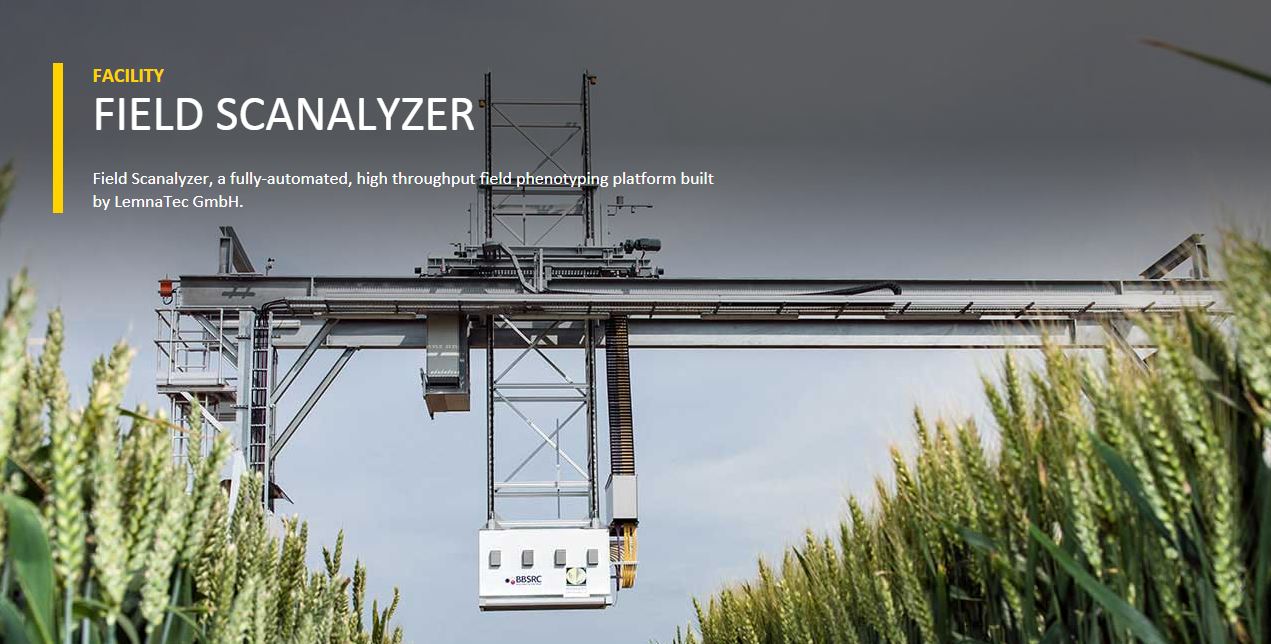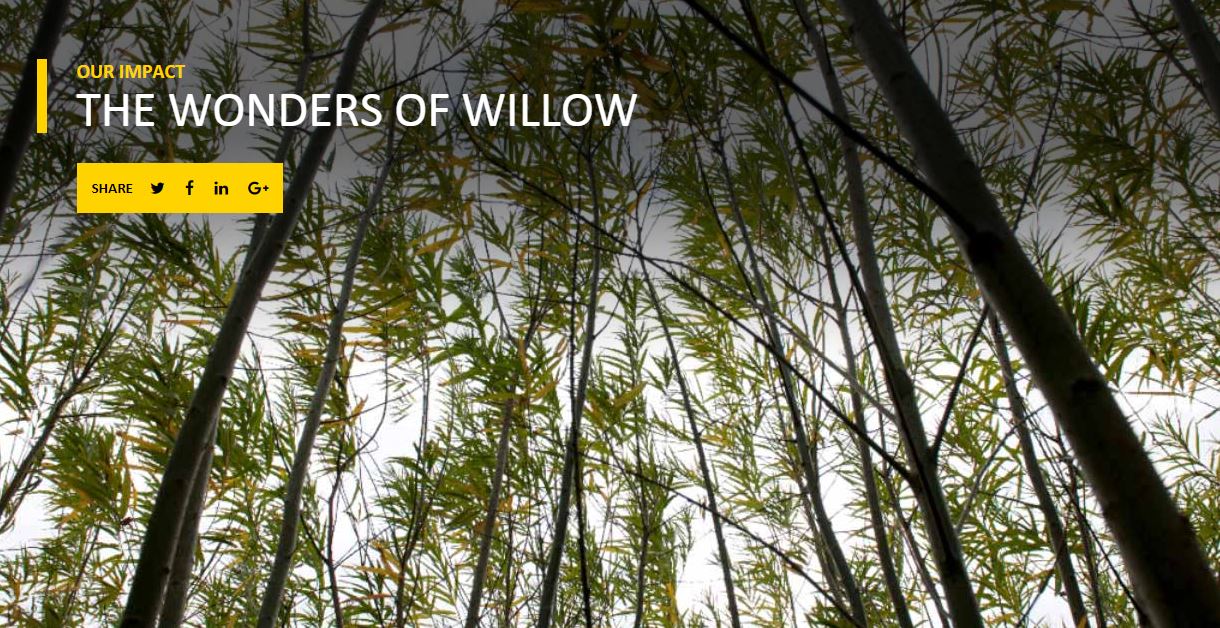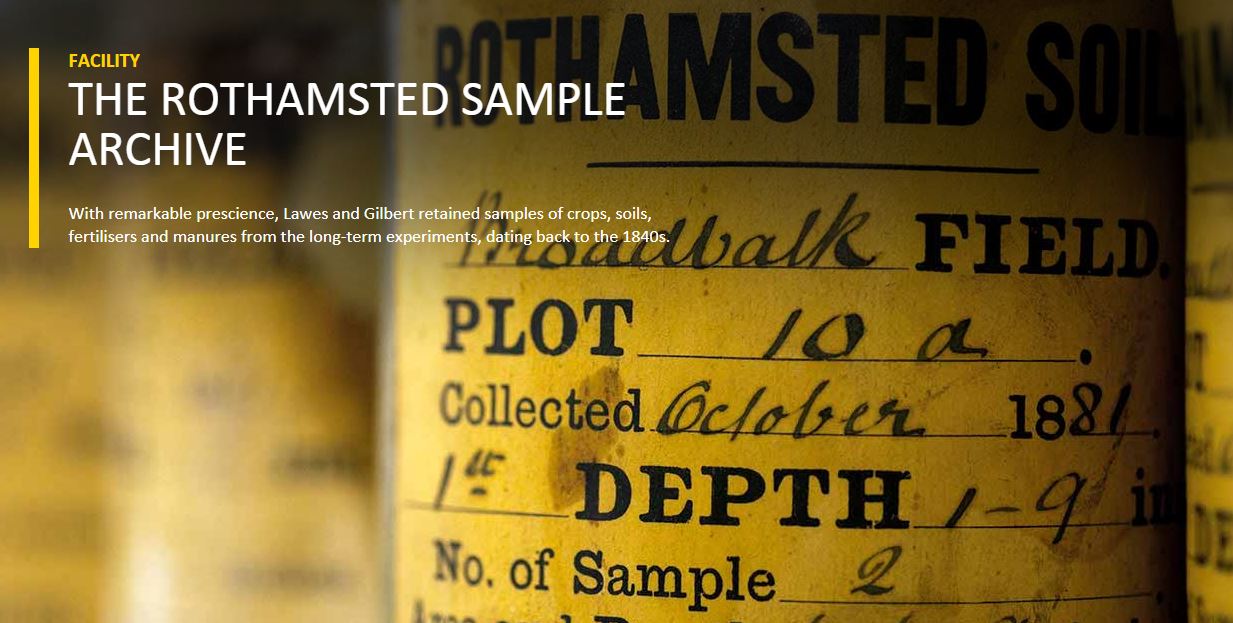

Conference 2017 Exploring Rothamsted
IAgrE Landwards Conference at Rothamsted Research 11th October 2017
Afternoon Activities – Exploring Rothamsted
Professor Achim Dobermann, Director and Chief Executive of Rothamsted Research
Prof Dobermann will welcome delegates to Rothamsted and introduce the afternoon session. He will give a brief overview of its new Science strategy and the role of engineering and technology to facilitate this.
Field Scanalyzer (Dr Nicolas Virlet & Guillaume Blanchy) 
The Field Scanalyzer is a fully automated robotic field phenotyping platform with a dedicated sensor array that may be accurately positioned in three dimensions and mounted on fixed rails has been built at Rothamsted. This facility allows continual and high-throughput monitoring of crop performance within a 15m x 120m area. Crops be monitored throughout the season with a high degree of resolution and reproducibility. Employed sensors include; high-resolution visible, chlorophyll fluorescence and thermal infrared cameras, two hyperspectral imagers and dual 3D laser scanners. The sensor array facilitates specific growth measurements and identification of key growth stages with dense temporal and spectral resolution. Together, this platform produces a detailed description of canopy development across the crops entire lifecycle, with a high-degree of accuracy and reproducibility. In conjunction with above ground measurements electrical resistive tomography (ERT) is being used to image soil drying under the growing crop.
Insect Radars (Dr Jason Lim) 
Rothamsted Radar Entomology Unit, a specialised technical unit within Britain’s oldest agricultural research institute. The unit was first established in 1971 and it has a wealth of knowledge and history in the use of remote sensing technology in study insect movement around the globe. Scientists are studying the interactions between human activities, insect spatial ecology and population dynamics in agricultural landscapes and beyond. At present, the unit focuses on insect movement ecology at both high and low altitudes. The high-flyers: with our network of vertical-looking radars (VLRs), we study insect migration at heights up to 1.2 km above the ground. The pollinators: we have pioneered radar tracking techniques for low-flying insects (e.g. bees). This allows us to understand the effect of modern agricultural systems on the behaviour of important pollinators.
Horticultural glasshouses and controlled environment facilities. (Julian Franklin) 
Almost half the energy used, costing in excess of £1 million, on the Rothamsted site is used to grow plants. Of this we estimate the majority is electricity to produce light. Whilst our glasshouses use free light we supplement natural light to extend daylength as well as provide additional light all year round. LED lighting can reduce electrical consumption by 50% yet still produce light intensities comparable to our existing SON-T and fluorescent lighting. The challenge is however to ensure light quality is still sufficient to grow plants. We will demonstrate the facilities used to grow plants (and insects) and the lighting used.
Cropping carbon (Dr Ian Shield)
An important component of the Cropping Carbon Institute Strategic Programme was the use of dedicated energy crops to substitute for fossil fuels. This aspect of the afternoon builds upon the presentation made in the morning. On display, will be a Short Rotation Coppice harvester; based upon a forage harvester the machine has a purpose built cutting head capable of dealing with the high yielding crops produced on UK farms. It will be parked alongside a standing crop of willow planted in a typical plantation design. There will also be the opportunity to see the harvested product, wood chip. The other major energy crop grown in the UK is miscanthus and some cut material will be displayed for comparison to the willow.
Rothamsted Sample Archives (Dr Andy MacDonald or Dr Andy Gregory) 
With remarkable prescience Lawes & Gilbert saved samples of crops, soils, fertilizer and manures from the long-term field experiments dating back to the 1840s. Successive generations of scientists at Rothamsted have continued to add to the collection and the resulting Sample Archive now comprises about 300,000 samples. This unique resource is of immense scientific value. No other long-term experiments have such an archive of material. Initially, samples were analysed for their nutrient content, including – N, C, P, K, Na, Mg etc, but with the development of new analytical techniques the samples have been used for many other studies, including: Detecting changes in atmospheric S deposition over time, the development of fungicide resistance in plant pathogens, the effects of S deposition on plant pathogen populations and detecting fallout from atomic bomb tests in the 1950s. Yield and analytical data associated with the samples, together with historic weather data, are stored in the electronic Rothamsted archive. The use of samples and data for collaborative research is actively encouraged.
Book your place now
career - your passport to professionalism...
If you have a query about events, click here...



